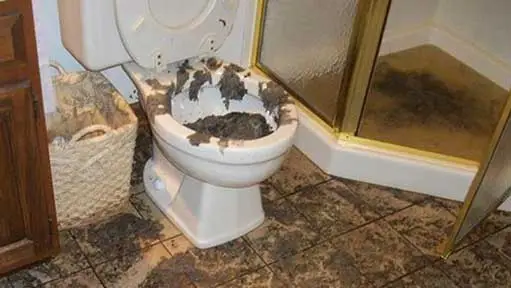
Sewage backup describes a situation where sewage from your home’s sewer line flows backward into your home instead of flowing outwards to the municipal sewer lines in the street. This problem mostly happens as the final phase of severe clogs/blockages inside your sewer line.
In terms of the damage it can cause and its impact on your family’s health, sewage backup is one of the most cost-prohibitive drain problems in the home. To fix this problem, you must solve the issues in your drain line and repair the damage to your walls and flooring.
That is why the best way to deal with sewage backup is to avoid it altogether, advises Brentwood Square, a leading property management Nashville TN. You can prevent sewage backups in your home if you know how to detect the early warning signs of the problem and take immediate steps to avert the disaster.
What are the major signs that there are brewing problems in your sewer line that can lead to sewage backup? What should you do if you see these signs in your home? This post will answer all your questions about how to prevent sewage backup in your home.
The top 7 signs of an impending sewage backup in your home
Multiple slow drains in the home
Drains become slow when there are clogs/blockages in the drainpipes. If only one drain in your home behaves this way, there is no reason to suspect a possible sewage backup. The problem is probably in the pipe directly connected to that drain. However, if several drains in the home are acting up at the same time, there could be an impending sewage backup.
Foul odors from your drains
Foul odors from your plumbing fixtures are a sign that sewer gases are trapped inside the sewer line. When more wastewater is flushed into the drain, the trapped gases are displaced by the water and forced backward. Eventually, these foul-smelling gases will find a way out of the sewer line by escaping through your home’s drain openings.
Strange sounds from your drains
Bubbling and gurgling sounds from a drain opening or toilet indicate that air is forcing its way out of the drain/toilet while water is entering it. Bubbling or gurgling sounds from a drain are often accompanied by foul odors from the same drain. That is because the problems are related: air is not flowing as it should within the sewer line.
Frequently clogged or overflowing toilet
Chronic toilet clogs or overflows may signify bigger issues in your drainage. If the blockage causing the problem near the drain opening, you can easily solve the problem with DIY methods, such as a plunger. But if it is deep inside the home’s drainage system, it is harder to find and can manifest as frequent toilet clogs.
Unusually lush patches of lawn
Certain strange phenomena in your lawn can signify impending sewage backup. If there is a strangely green patch of grass or a soggy patch of lawn, it could be a sign that your underground sewer line is broken and leaking wastewater into the lawn. Tree roots and soil can find their way into the broken pipe, leading to sewage backup in your home.
Your plumbing fixtures are acting strange
The plumbing fixtures in your home are linked because each is connected to the drainage system. As a result, issues in the main sewer line can cause strange behaviors in your plumbing fixtures. For instance, if the water in your toilet bowl or sink moves every time you use the washing machine, it could be a sign that your sewer line is blocked.
Your home is invaded by pests
A burst underground sewer line will attract insects and rodents to your home. Even if you cannot see that nutrient-rich wastewater is released into your lawn, cockroaches and other insects can. These insects will draw rodents and reptiles that want to feed on them. If you see a sudden increase in insects on your property, your home may be in danger of possible sewage backup.
What should you do if you see these signs in your home?
The recommended step is to contact a qualified plumber immediately. That’s because you do not have the tools or know-how to accurately detect what is happening inside your home’s sewer line, but a plumber does.
What will the plumber do to solve the problem?
As a first step, the plumber may have to do a sewer camera inspection: a close-up visual assessment of the sewer line. Based on the result of this inspection, they can:
- Determine the nature and extent of the problem
- Pinpoint its exact location
- And determine the most cost-effective way to solve it
Finally, to avert future sewer line problems, you may want to create a plan for preventive maintenance of your home’s drainage system. How does a preventive plumbing maintenance plan work, and how can you have one?


